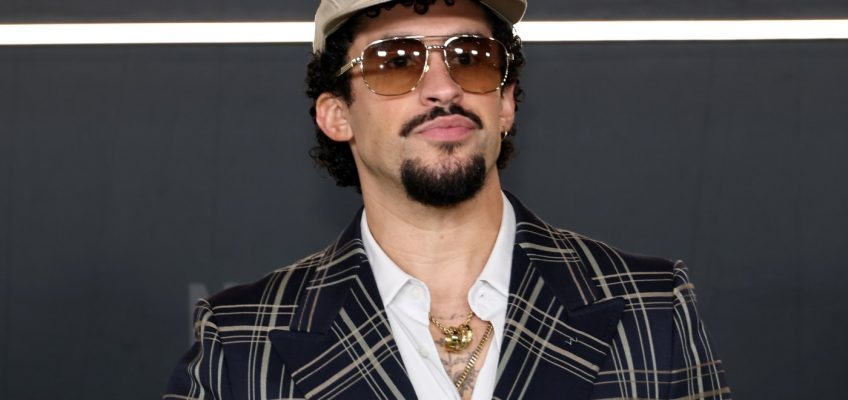Art and music have always been more than entertainment. They are ways of remembering who we are, of finding meaning in what we have lived, and of healing together. In times of loss, grief, or change, art opens a door to connection, a door that sometimes words alone cannot.
Recently, Bad Bunny’s concert residency in Puerto Rico reminded me of that. Beyond the fame and the lights, what stood out was how he centered his people and their everyday lives. At the center of the concert was “La Casita”, a small, familiar-looking house with a porch, like those you find across the Caribbean and in many southern parts of our own country. The performance unfolded from that porch, a space that felt instantly recognizable and close to home. It reminded me of what it was like to grow up in Latin America, to experience that collectiveness that is part of daily life, the laughter with neighbors, watching people walk by, the conversations, the celebrations, the music always in the background, and even the shared struggles that shape community life.
Its power was not in glamorous lighting or futuristic design but in how it centered the beauty of the everyday. The stage itself reflected something profoundly human: simplicity, connection and belonging. It reminded me that our ordinary lives, our neighborhoods and our joys in the midst of hardship are sacred and deserve to be celebrated.
What is also remarkable about this concert is that while it was created with Puerto Ricans in mind, it transcended that context. Many Latin Americans around the world have seen themselves reflected in it, in the grief of migration, in the complexities of the political and social histories of our countries, and in the immense beauty that we carry with us. The music and imagery reflected our colors, our nature, our resilience and our joy. It reminded us that even when we leave our homelands behind, our roots continue to speak through every song, every rhythm, and every story we share.
I know that not everyone connects with Bad Bunny’s lyrics or style, and that this is true both within Latino culture and beyond. For many native English speakers, his music may be unfamiliar or hard to relate to. But for me, as a Latina therapist living in Minneapolis, with a private practice in St. Paul where I also teach at St. Catherine University, I see something different. I work with many Latino clients who carry deep grief and exhaustion, grief from racial profiling, from being unseen, from the constant negative narratives about our community, and from the transgressions against our rights and dignity that we continue to witness.
In that context, seeing our stories centered so intentionally and so proudly feels healing. Bad Bunny’s concert residency in Puerto Rico achieved something extraordinary. It placed the everyday Puerto Rican experience, the real, beautiful, complicated, collective life of the people, at the center of a global stage. Many of us, including myself and the clients I work with, have felt seen and reflected in that act.
Representation, when done with authenticity and care, is powerful because it touches a human chord we all share: the need to be seen and known. It begins with seeing ourselves with honesty and compassion and then extends outward when others recognize our stories and affirm our place in the larger human experience. When a community’s truth is reflected with authenticity, it becomes a mirror for everyone, reminding us that to be seen is one of the most basic and healing human needs. That is the gentle yet transformative power of art and representation.
When Bad Bunny later announced an additional concert during his concert residency in Puerto Rico on the anniversary of Hurricane María, it became clear how intentional this work of representation was. That day holds deep pain for Puerto Ricans, marked by loss, anger, and the feeling of being forgotten. Yet instead of avoiding the date, he chose to honor it. He turned a day of collective grief into a day of music, pride and community. It did not erase the trauma, but it offered a new memory to hold beside it, a reminder of resilience and dignity.
That is how healing works. We do not erase what hurt us. We learn to hold both the pain and the hope. We integrate them. Art allows us to do that. It helps us create new meaning where pain once lived. It invites us to transform memory into something softer, something that breathes again.
At a time when so many negative narratives surround the Latino community, this kind of cultural affirmation matters deeply. It reminds us that we are more than stories of struggle. We are creativity, strength and joy.
Every time we celebrate what is ours, our music, our food, our language and our stories, we are practicing self and collective-care. We are saying to ourselves and to one another that we are still here, we belong, and we matter.
Ana Mariella Rivera is a seasoned bicultural psychotherapist, adjunct instructor, podcaster and current Humphrey Policy Fellow. A mental health advocate and Telemundo Minnesota collaborator, she uses storytelling and media to explore how culture, identity, representation and leadership shape well-being and belonging across communities.
Related Articles
Your Money: Cybersecurity and your money in the AI era
Working Strategies: Job search over 60: “purpose” vs. paycheck
Joe Soucheray: If you list St. Paul’s 100 most pressing needs, bikes come in at 101
Cole Hanson: Weak enforcement, scattered resources can put recourse out of reach for St. Paul renters
Dillon Donnelly: Why is St. Paul building rec centers while families can’t afford rent?


Leave a Reply